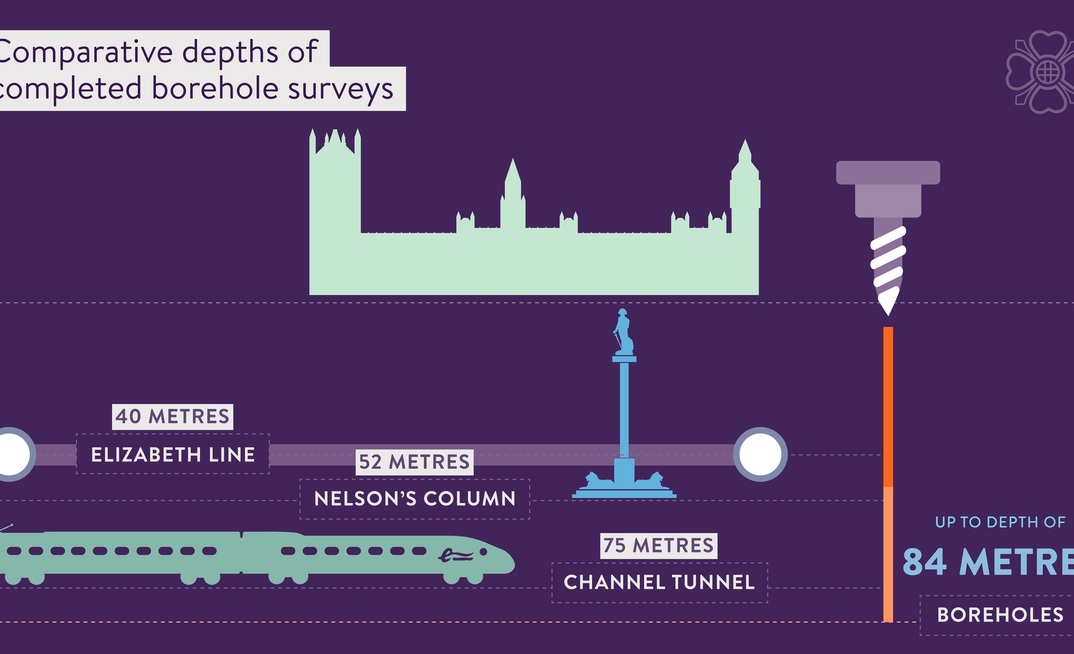Over the Easter Recess period, the Houses of Parliament Restoration and Renewal Delivery Authority drilled an 84m borehole deeper than the Channel Tunnel as part of over 1500 hours of intrusive surveys across the Palace of Westminster, the home of the UK's government.
The borehole, the deepest to date by the Restoration and Renewal Programme, was dug to investigate the geological condition of the ground on which the Palace stands. It will help surveyors for the Delivery Authority confirm the different ground conditions under the Palace. At 84m deep, this borehole is deeper than the Channel Tunnel.
The Palace of Westminster needs extensive restoration work to continue to serve as the home of the UK's democracy for generations to come. In March, a Strategic Case report endorsed by the R&R Client Board – made up of the Commissions of both Houses of Parliament – was published. It sets out the three options identified to be taken forward for further work over the next year and which will be brought back to support decisions by MPs and peers on costed proposals in 2025.
Nigel Evans MP, Deputy Speaker of the House of Commons and chair of the R&R Programme Board, said: "We're getting on with critical repairs and maintenance work across Parliament alongside important building surveys like huge underground boreholes as part of the extensive restoration and renewal of the Palace of Westminster."
YOU MIGHT ALSO LIKE
The Restoration and Renewal Programme is carrying out the tens of thousands of hours of complex building surveys and investigations needed to inform future decisions on the restoration work.
Matt White, Restoration and Renewal programme director said: "Designing for a building as old and complex as the Palace isn't easy, and we don't always have complete plans we can work from due to the age of the building. To restore the Palace, we first need to understand it. These intrusive surveys help us better understand the condition of the Palace by looking at ground conditions, floors and ceilings, heritage items, and air quality. This information is used to inform the development of detailed architectural designs on every aspect of the Palace."


















